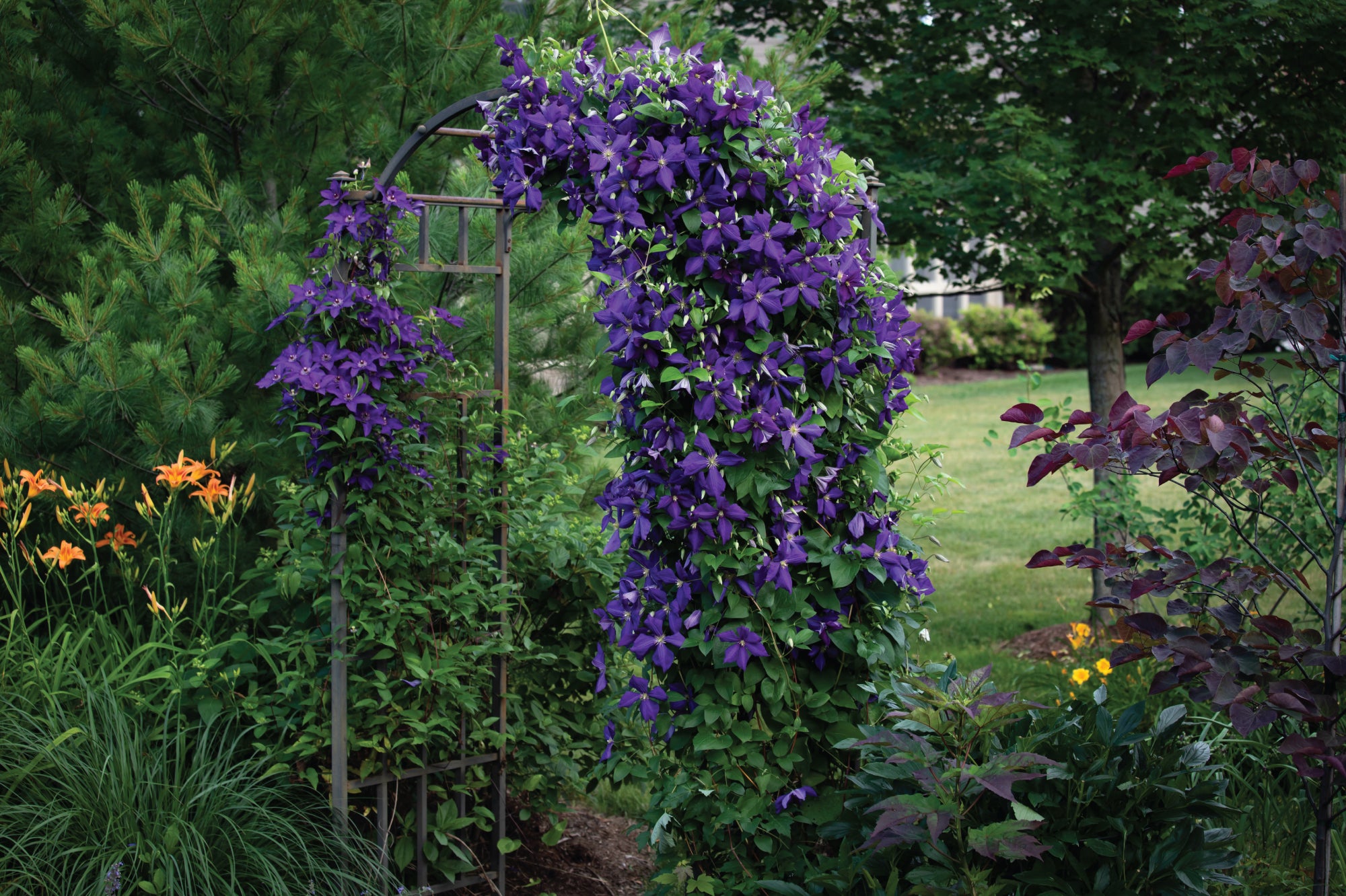The genus Clematis includes over 300 species spanning every continent except Antartica. Without a doubt there is a clematis that will fit perfectly in your garden!
More than 400 varieties are in cultivation. Clematis are grown for their abundant flowers, often followed by decorative, filamentous, silvery-gray seed heads. They are valued for their long flowering period, and for the variety of shape and color of their flowers.
While most clematis are known for their twining leaves and semi-woody stems, they are extremely diverse in habit, size, and growth requirements. There are evergreen and deciduous varieties. Some cultivars are compact and perfect for containers and some are sprawling giants that can hide an entire fence line or shed!
Care Information
Where to Plant
The majority of clematis benefit from ‘hot tops and cool bottoms.' This means the top of the plant with all the foliage should receive full sun to partial shade and the base of the plant with the roots should be shaded. It is essential for the roots to remain cool and moist even during the heat of summer. This can be accomplished with a heavy mulch, the shade of low growing plants, or even a large rock.
There are some varieties that prefer partial to full shade so it important to check the plant tag when buying a new clematis.
Plant your clematis next to a plant or structure that it can grow up.
How to Plant
Clematis like fertile, humus-rich, well-drained soil.
When planting, place the root ball about 3 inches below the soil surface to reduce the risk of clematis wilt and to encourage production of strong shoots from below the soil level. Remember that most clematis need staking, so add one now if required.
Provide the plant with a ground cover plant or a mulch such as shredded leaves, pine needles, straw, bark, or even stones to help conserve moisture and to keep the roots cool.
Clematis resent root disturbance, so extreme care must be exercised when working around the plant to prevent any root damage. Water well, keeping the soil always moist during the first year after planting. Fertilizer should be applied twice during the growing season.
Clematis Wilt
Clematis wilt is caused by soil splashing onto the stem, and is easily prevented with a mulch of bark, gravel, or anything that prevents soil splashing around the stems.
Deep planting allows susceptible plants to develop a crown of growth buds below ground level, and since the wilt disease affects the stem at ground level or just above, healthy new shoots from below ground can restore the plant very quickly if attacked by the wilt disease.
When watering in summer it is best not to wet the foliage, but trickle the water around the base of the plant and give a good deep soak twice a week.
Pruning
One of the most important aspects of clematis culture is the pruning method. Since modern garden hybrids and selections in cultivation come from a range of different species, their growth and flowering habits must be considered at pruning time.
Before pruning give a good feed of compost and bone meal. You may also need to add fresh mulch to prevent soil splash.
There are three types of pruning:
Type I: Blooms on previous year’s growth in the spring. Remove dead wood and lightly prune to shape after flowering. This covers all C. montana, C. alpina, and C. macropetala.
Type II. Bears flowers on old wood in the spring and on new wood in the summer. Moderate pruning after spring bloom as needed. Light pruning after summer/fall bloom.
Type III. Bears flowers on new growth each year. These are summer blooming varieties. Prune these forms hard in winter to encourage new growth for better flowering next season.
